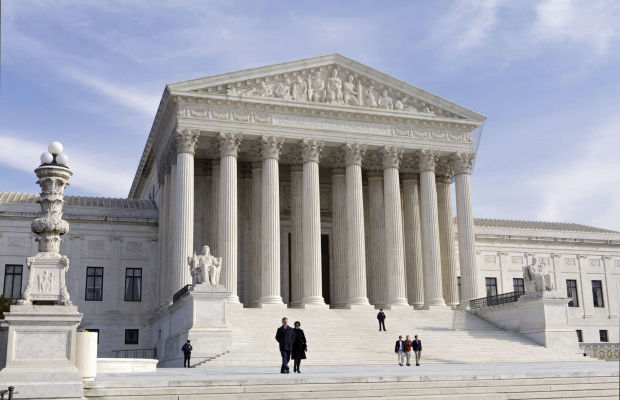The U.S. Supreme Court will hear arguments Tuesday about why legislative districts in Arizona have unequal populations — and whether that matters legally.
Republican interests, as well as two state GOP officials, want the justices to conclude that the Independent Redistricting Commission acted illegally when it drew the lines in 2011 for all the elections for this decade. They point out that some of the 30 districts have more residents than others.
That point is not in dispute. Even the commission’s lawyers concede that there is an 8.8 percent difference in populations between the largest and smallest.
What the high court will consider is the question of whether the move was justified.
If the justices conclude otherwise, they will order the commission to redraw the lines, this time without the population variations.
But the implications of that are more than just numeric: Any shifts could pave the way for Republicans, who already dominate both the state House and Senate, to pick up even more seats.
Mary O’Grady, the commission’s attorney, says the deviations made by the panel were necessary to comply with the federal Voting Rights Act. The law at that time required Arizona, as a state with a history of discrimination, to obtain “preclearance” from the Department of Justice for any changes in voting laws. And that includes district lines.
That required Arizona to demonstrate the change does not have either the purpose or effect of racial discrimination. Put simply, preclearance would not be provided for changes that make it harder for a minority group to elect its “preferred candidates.”
But Mark Hearne, who represents Republicans who are challenging the plan, said that ignores a more important “one-person, one-vote” requirement. Unequal districts mean that those who live in underpopulated districts have greater voting strength than those who live in districts with more voters.
And the situation is even more complicated than that.
Subsequent to the 2011 redistricting, the U.S. Supreme Court voided the whole preclearance requirement for Arizona and other states. Hearne contends that means, at the very least, the commission should be forced to redraw the lines without worrying about that goal.
But in the filings for the Department of Justice, Donald Verrilli Jr., the federal solicitor general, told the court to ignore that argument.
“States should comply with federal voting rights law as it stands at the time rather than attempt to predict future legal developments and selectively comply with voting rights law in accordance with their predictions,” he wrote.
And Verrilli pointed out that while preclearance is gone, the Voting Rights Act — and its prohibition against diluting minority voting strength — remains.
Hearne has his own theory of why the population deviations: politics.
He said the commission moved Republican voters into districts where the GOP already had an edge. That resulted in districts where Democrats had a better chance of winning.
That’s not necessarily illegal. In fact, the courts have never ruled that partisan decisions are forbidden.
But Hearne said what they cannot legally do is give Democrats an advantage by ignoring the requirements for equal-size districts.
Hearne has some backing for his claim of partisanship.
In a ruling last year, a panel of three judges concluded that the evidence shows that “partisanship played some role in the design of the map.”
But the majority of the court concluded that the U.S. Constitution does not require that legislative districts have precisely equal population. Instead, the judge said, there can be “divergencies” that are necessary to achieve other goals.
And in this case, they accepted the contention by the commission that the manipulation of the lines was “primarily a result of good-faith efforts to comply with the Voting Rights Act.”
That decision was not unanimous. In a dissent, Judge Neil Wake wrote that “it does not take a Ph.D. to see this stark fact of intended party benefit.”
It is that conclusion that Hearne hopes the majority of the Supreme Court will adopt.
Up until 2000, lines for both legislative and congressional districts were drawn by state lawmakers. That essentially allowed the party in power to craft districts designed to give a political edge to its own members.
That year, however, voters approved a state constitutional amendment giving the power to the commission. It requires commissioners to create districts that respect communities of interest, use county boundaries when possible, create as many politically competitive districts as possible and have districts of equal size.
Using 2010 census figures, each district created for this decade should have about 213,000 residents. But the commission, by its own admission, had districts ranging from 203,026 to 220,157.
There is some evidence the maps helped increase Democrat representation. Following redistricting, there were 13 Democrats in the 30-member Senate and 24 Democrats out of 60 House members. That compares with just nine Senate Democrats and 20 in the House prior to redistricting, though Democrats have had larger numbers in some prior years.





